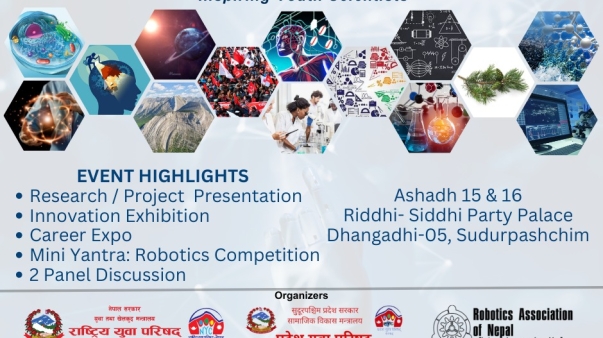Technology on-air is developing rapidly and growing enormously. We are in the era of drones where dependence on aircraft is minimal. UAV is very popular and has a wide range of applications.
In 2013, the Robotics Association of Nepal provided an RC fixed-wing airplane where we let participants understand the ABC of aerodynamics then completed to Z viz flying the RC airplane.
In 2015, we conducted a closed workshop for 8 students of Tri-Chandra Multiple Campus on quadcopter making and flying. We had a demo of Phantom II at Kantipur Engineering College(KEC).
To transfer this knowledge of aerodynamics, different workshops will be conducted.
Here is the basic thing you need to know for aerodynamics:
Aerodynamics is the way air moves around things. The rules of aerodynamics explain how an airplane is able to fly. Anything that moves through air reacts to aerodynamics. A rocket blasting off the launch pad and a kite in the sky react to aerodynamics. Aerodynamics even acts on cars, since air flows around cars.
What Are the Four Forces of Flight?
The four forces of flight are lift, weight, thrust, and drag. These forces make an object move up and down, and faster or slower. How much of each force there are changes how the object moves through the air.
Weight comes from gravity pulling down on objects.
What Is Weight?
Everything on Earth has weight. This force comes from gravity pulling down on objects. To fly, an aircraft needs something to push it in the opposite direction from gravity. The weight of an object controls how strong the push has to be. A kite needs a lot less upward push than a jumbo jet does.
What Is Lift?
Lift is the push that lets something move up. It is the force that is the opposite of weight. Everything that flies must have a lift. For an aircraft to move upward, it must have more lift than weight. A hot air balloon has lift because the hot air inside is lighter than the air around it. Hot air rises and carries the balloon with it. A helicopter’s lift comes from the rotor blades at the top of the helicopter. Their motion through the air moves the helicopter upward. Lift for an airplane comes from its wings. An airfoil shape is especially good at producing lift.
How Do an Airplane’s Wings Provide Lift?
The shape of an airplane’s wings is what makes it able to fly. Airplanes’ wings are curved on top and flatter on the bottom. That shape makes airflow over the top faster than under the bottom. So, less air pressure is on top of the wing. This condition makes the wing, and the airplane it’s attached, move up. Using curves to change air pressure is a trick used on many aircraft. Helicopter rotor blades use this trick. Lift for kites also comes from a curved shape. Even sailboats use this concept. A boat’s sail is like a wing. That’s what makes the sailboat move. As an object moves through the air, it pushes aside air molecules.
What Is Drag?
Drag is a force that tries to slow something down. It makes it hard for an object to move. It is harder to walk or run through water than through air. That is because water causes more drag than air. The shape of an object also changes the amount of drag. Most round surfaces have less drag than flat ones. Narrow surfaces usually have less drag than wide ones. The more air that hits a surface, the more drag it makes.
What Is Thrust?
Thrust is the force that is the opposite of drag. Thrust is the push that moves something forward. For an aircraft to keep moving forward, it must have more thrust than drag. A small airplane might get its thrust from a propeller. A larger airplane might get its thrust from jet engines. A glider does not have thrust. It can only fly until the drag causes it to slow down and land.
Credits: NASA
Quadcopter Making and Phantom Piloting Workshop:
Workshop Outline :
Introduction of Drone
Scope of Drone
Drone application in a different field
Drones all over the World
Parts of Phantom II
Features of Phantom
How to make your own drone?
Contact: 9860308879/9841024507 for drone workshop.
Flight Permission
For all Drone makers and Quadcopter lovers, here are the rules and regulations from the Civil Aviation Authority of Nepal (CAN). Follow the rules before you fly the Drones.
RC fixed-wing airplane
Back in 2012, when the evolution of aerodynamics was at the stage of disrupting air technology. We in collaboration with Aerospace from India organized two days workshop on RC fixed-wing airplanes at Himalayan College of Engineering (HCOE). The workshop had the participation of 16 different teams from 10 engineering colleges of Nepal.
- Himalayan College of Engineering
- CITE
- Sagarmatha Engineering College
- Kathmandu engineering college
- Kantipur Engineering college
- Advanced College of Engineering
- HIST
- Khwopa College of Engineering
- ACME College of Engineering
- Kathford College of Engineering And Management
The exciting number ended with all the participants flying their RC fixed-wing plane.
Our sincere gratitude goes to Sunil Maharjan ( Maestro in Quad flying and video technology ).


